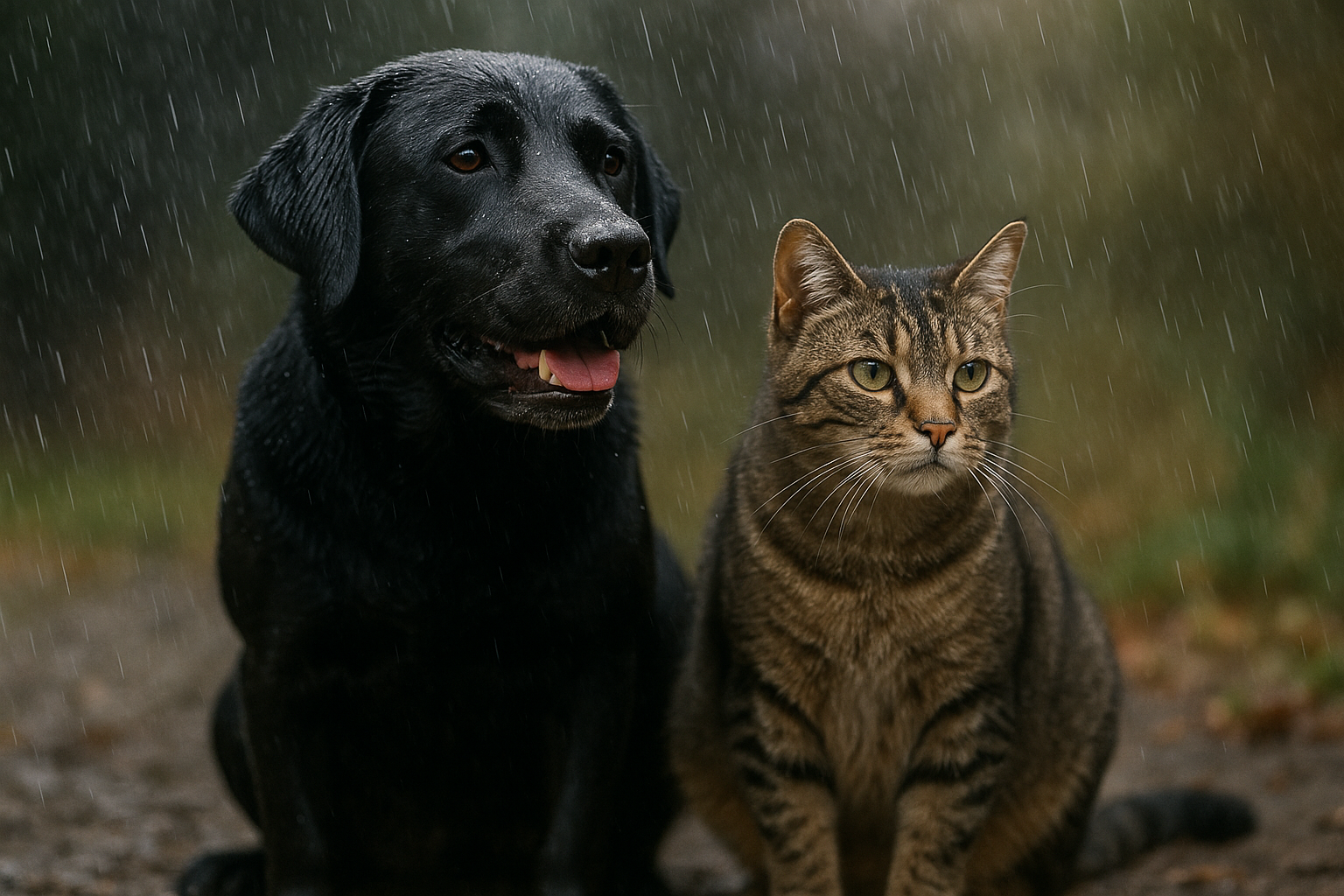As the weather changes and the seasons become harder to predict, taking care of pets in extreme temperatures is very important. Dogs, cats, and other small animals rely on us to keep them safe and comfortable, especially when the weather changes quickly. To ensure they stay well during very hot, cold, or stormy days, we need to know what to do and pay close attention to them.
Summer: The Hidden Threat of Heat
Heatwaves can be dangerous for animals, often more quickly than we think. Unlike humans, dogs and cats have few ways to cool themselves, primarily by panting. This means that when it gets very hot, they can quickly be in danger.
Key Summer Risks:
Heatstroke can occur during short walks, especially for flat-faced dogs and those with dark fur. Pavement and sand absorb sunlight; paws can burn within seconds. Humidity makes cooling nearly impossible for animals that cannot sweat effectively.
Evidence-Based Protection:
- Move all walks or playtimes to the mornings or evenings, avoiding the intense heat between 10 a.m. and 4 p.m.
Test surfaces by placing your hand on them; if it’s hot for you, it’s dangerous for your pet.
- Provide unlimited fresh water and create shade both indoors and outdoors.
Use science-based cooling methods: damp towels to lay on, frozen treats, or fresh air flow from fans.
- Never leave an animal in a parked car, not even for a “quick errand.” Temperatures can rise very quickly.
Critical Warning Signs:
Rapid, noisy panting; glazed eyes; bright red tongue or gums. Loss of balance, confusion, vomiting, or even sudden collapse.
Immediate Action: If heat stress appears, move the animal to the coolest possible place. Offer water (do not force drinking) and carefully dampen the belly and paws with cool, not cold, water. Seek emergency veterinary help.
Winter: The Hidden Dangers of Cold
Contrary to popular belief, fur is not a perfect shield; even long-haired animals can feel the effects of cold or wind.
Main Cold Weather Risks:
Small, short-haired, young, or elderly animals lose body heat rapidly. Wet weather removes the insulating power of fur. Ice, salt, and antifreeze can be dangerous for paws and health (antifreeze is highly toxic).
Proven Safety Steps:
- Reduce outdoor time during extreme cold spells. Play and walks are still vital, but monitor for shivering.
- Dress dogs who feel cold in properly fitting coats or sweaters.
Provide dry, insulated bedding, and place beds away from drafts or doorways. Heated beds designed for pets are beneficial if used safely.
- After walks, clean and check paws for ice, salt, or injuries.
Signs of Cold Distress:
- Persistent shivering.
Pale, cold ears or paws. Difficulty moving, lethargy, or seeking warm/hidden places.
Emergency Care: Warm pets gently—wrap them in blankets and call the vet if symptoms do not improve. Never use heating pads directly, as burns are a real risk.
Weather Emergencies: Storms, Floods, and Power Outages
Beyond temperature, modern weather brings new concerns: storms, floods, and even wildfires.
Preparedness Makes the Difference:
Safe Space: Create a quiet, cozy room or safe crate for pets during storms. White noise or calm music may muffle thunder or wind. Emergency Kit: Store several days of pet food, bottled water, medications, leashes, a flashlight, and copies of vet records in a waterproof bag.
Identification: It is crucial for pets to have a collar with a current tag and registered microchip, as many pets get lost during severe storms or when people need to evacuate quickly.
Stay calm when things are chaotic; pets often sense our anxiety. Provide reassurance by staying close, speaking in a soothing voice, and offering a favorite blanket or toy.
Special Tips for Caring for Small Companion Animals
Rabbits, guinea pigs, birds, and other pocket pets are particularly sensitive to environmental changes.
In Hot Weather:
- Place cages away from sun-exposed windows.
- Offer chilled tiles, ceramic dishes, or frozen bottles (wrapped) to help lower enclosure temperatures.
- Never use fans blowing directly onto small-bodied animals—they chill rapidly.
In Cold Weather:
Position habitats away from windows, doors, and exterior walls.
- Increase bedding depth; choose materials that retain warmth without molding.
Ensure that water bottles don’t freeze—a common but often overlooked risk.
Year-Round Wisdom: Prevention is Best
Practice environmental checks: walk through your home at the start of each season, fixing drafts, providing shade, and eliminating toxic hazards.
Adapt routines to the weather: switch to indoor games during extremes, and make hydration as much a habit as feeding.
Plan for absences: If you travel or evacuate, arrange reliable care with clear instructions and contact information.
Signs That Demand Immediate Attention:
Panting or shivering out of season. Restlessness, seeking shelter, or trying to escape. Loss of appetite, vomiting, or sudden behavioral changes. Unexplained lethargy or “not themselves.”
Never hesitate to consult your veterinarian if you’re concerned; prompt action can save lives.
A Lasting Commitment
The weather can be quite unpredictable, but we can be prepared. Caring for our pets every day helps keep them safe and happy, even when it’s very hot, cold, or stormy. True guardianship is more than just following rules; it’s about understanding what they need to feel protected from the weather and any dangers.
Your readiness is a lifeline. For your pet, this can change everything, in every season.
